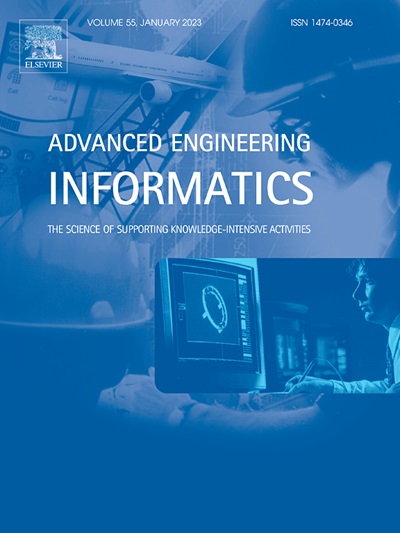A data-efficient and general-purpose hand–eye calibration method for robotic systems using next best view
IF 8
1区 工程技术
Q1 COMPUTER SCIENCE, ARTIFICIAL INTELLIGENCE
引用次数: 0
Abstract
Calibration between robots and cameras is critical in automated robot vision systems. However, conventional manually conducted image-based calibration techniques are often limited by their accuracy sensitivity and poor adaptability to dynamic or unstructured environments. These approaches present challenges for ease of calibration and automatic deployment while being susceptible to rigid assumptions that degrade their performance. To close these limitations, this study proposes a data-efficient vision-driven approach for fast, accurate, and robust hand–eye camera calibration, and it aims to maximise the efficiency of robots in obtaining hand–eye calibration images without compromising accuracy. By analysing the previously captured images, the minimisation of the residual Jacobian matrix is utilised to predict the next optimal pose for robot calibration. A method to adjust the camera poses in dynamic environments is proposed to achieve efficient and robust hand–eye calibration. It requires fewer images, reduces dependence on manual expertise, and ensures repeatability. The proposed method is tested using experiments with actual industrial robots. The results demonstrate that our NBV strategy reduces rotational error by 8.8%, translational error by 26.4%, and the number of sampling frames by 25% compared to artificial sampling. The experimental results show that the average prediction time per frame is 3.26 seconds.
基于次优视角的机器人手眼标定方法
在自动化机器人视觉系统中,机器人与相机之间的标定至关重要。然而,传统的基于图像的手动校准技术往往受到精度灵敏度和对动态或非结构化环境适应性差的限制。这些方法对易于校准和自动部署提出了挑战,同时容易受到降低其性能的严格假设的影响。为了消除这些限制,本研究提出了一种数据高效的视觉驱动方法,用于快速,准确和鲁棒的手眼相机校准,旨在最大限度地提高机器人在不影响精度的情况下获得手眼校准图像的效率。通过分析先前捕获的图像,利用残差雅可比矩阵的最小化来预测机器人校准的下一个最佳姿势。为了实现高效、鲁棒的手眼标定,提出了一种在动态环境下调整相机姿态的方法。它需要更少的图像,减少对手动专业知识的依赖,并确保可重复性。通过实际工业机器人的实验验证了该方法的有效性。结果表明,与人工采样相比,我们的NBV策略可将旋转误差降低8.8%,平移误差降低26.4%,采样帧数减少25%。实验结果表明,平均每帧预测时间为3.26秒。
本文章由计算机程序翻译,如有差异,请以英文原文为准。
求助全文
约1分钟内获得全文
求助全文
来源期刊

Advanced Engineering Informatics
工程技术-工程:综合
CiteScore
12.40
自引率
18.20%
发文量
292
审稿时长
45 days
期刊介绍:
Advanced Engineering Informatics is an international Journal that solicits research papers with an emphasis on 'knowledge' and 'engineering applications'. The Journal seeks original papers that report progress in applying methods of engineering informatics. These papers should have engineering relevance and help provide a scientific base for more reliable, spontaneous, and creative engineering decision-making. Additionally, papers should demonstrate the science of supporting knowledge-intensive engineering tasks and validate the generality, power, and scalability of new methods through rigorous evaluation, preferably both qualitatively and quantitatively. Abstracting and indexing for Advanced Engineering Informatics include Science Citation Index Expanded, Scopus and INSPEC.
 求助内容:
求助内容: 应助结果提醒方式:
应助结果提醒方式:


